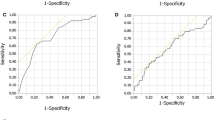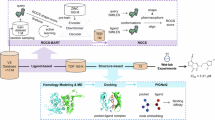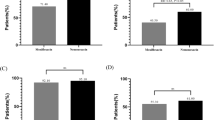Abstract
Aim:
To evaluate the effects of an Al3+- and Mg2+-containing antacid, ferrous sulfate, and calcium carbonate on the absorption of nemonoxacin in healthy humans.
Methods:
Two single-dose, open-label, randomized, crossover studies were conducted in 24 healthy male Chinese volunteers (12 per study). In Study 1, the subjects orally received nemonoxacin (500 mg) alone, or an antacid (containing 318 mg of Al3+ and 496 mg of Mg2+) plus nemonoxacin administered 2 h before, concomitantly or 4 h after the antacid. In Study 2, the subjects orally received nemonoxacin (500 mg) alone, or nemonoxacin concomitantly with ferrous sulfate (containing 60 mg of Fe2+) or calcium carbonate (containing 600 mg of Ca2+).
Results:
Concomitant administration of nemonoxacin with the antacid significantly decreased the area under the concentration-time curve from time 0 to infinity (AUC0–∞) for nemonoxacin by 80.5%, the maximum concentration (Cmax) by 77.8%, and urine recovery (Ae) by 76.3%. Administration of nemonoxacin 4 h after the antacid decreased the AUC0–∞ for nemonoxacin by 58.0%, Cmax by 52.7%, and Ae by 57.7%. Administration of nemonoxacin 2 h before the antacid did not affect the absorption of nemonoxacin. Administration of nemonoxacin concomitantly with ferrous sulfate markedly decreased AUC0–∞ by 63.7%, Cmax by 57.0%, and Ae by 59.7%, while concomitant administration of nemonoxacin with calcium carbonate mildly decreased AUC0–∞ by 17.8%, Cmax by 14.3%, and Ae by 18.4%.
Conclusion:
Metal ions, Al3+, Mg2+, and Fe2+ markedly decreased the absorption of nemonoxacin in healthy Chinese males, whereas Ca2+ had much weaker effects. To avoid the effects of Al3+ and Mg2+-containing drugs, nemonoxacin should be administered ≥2 h before them.
Similar content being viewed by others
Log in or create a free account to read this content
Gain free access to this article, as well as selected content from this journal and more on nature.com
or
References
Roychoudhury S, Ledoussal B . Non-fluorinated quinolones (NFQs): new antibacterials with unique properties against quinolone-resistant gram-positive pathogens. Curr Drug Targets Infect Disord 2002; 2: 51–65.
Adam HJ, Laing NM, King CR, Lulashnyk B, Hoban DJ, Zhanel GG . In vitro activity of nemonoxacin, a novel nonfluorinated quinolone, against 2,440 clinical isolates. Antimicrob Agents Chemother 2009; 53: 4915–20.
Chen YH, Liu CY, Lu JJ, King CH, Hsueh PR . In vitro activity of nemonoxacin (TG-873870), a novel non-fluorinated quinolone, against clinical isolates of Staphylococcus aureus, enterococci and Streptococcus pneumoniae with various resistance phenotypes in Taiwan. J Antimicrob Chemother 2009; 64: 1226–9.
Lauderdale TL, Shiau YR, Lai JF, Chen HC, King CH . Comparative in vitro activities of nemonoxacin (TG-873870), a novel nonfluorinated quinolone, and other quinolones against clinical isolates. Antimicrob Agents Chemother 2010; 54: 1338–42.
Chung DT, Tsai CY, Chen SJ, Chang LW, King CH, Hsu CH, et al. Multiple-dose safety, tolerability, and pharmacokinetics of oral nemonoxacin (TG-873870) in healthy volunteers. Antimicrob Agents Chemother 2010; 54: 411–7.
Guo B, Wu X, Zhang Y, Shi Y, Yu J, Cao G, et al. Safety and clinical pharmacokinetics of nemonoxacin, a novel non-fluorinated quinolone, in healthy Chinese volunteers following single and multiple oral doses. Clin Drug Investig 2012; 32: 475–86.
Lin L, Chang LW, Tsai CY, Hsu CH, Chung DT, Aronstein WS, et al. Dose escalation study of the safety, tolerability, and pharmacokinetics of nemonoxacin (TG-873870), a novel potent broad-spectrum nonfluorinated quinolone, in healthy volunteers. Antimicrob Agents Chemother 2009; 54: 405–10.
van Rensburg DJ, Perng RP, Mitha IH, Bester AJ, Kasumba J, Wu RG, et al. Efficacy and safety of nemonoxacin versus levofloxacin for community-acquired pneumonia. Antimicrob Agents Chemother 2010; 54: 4098–106.
Frost RW, Lasseter KC, Noe AJ, Shamblen EC, Lettieri JT . Effects of aluminum hydroxide and calcium carbonate antacids on the bioavailability of ciprofloxacin. Antimicrob Agents Chemother 1992; 36: 830–2.
Polk RE, Healy DP, Sahai J, Drwal L, Racht E . Effect of ferrous sulfate and multivitamins with zinc on absorption of ciprofloxacin in normal volunteers. Antimicrob Agents Chemother 1989; 33: 1841–84.
Shiba K, Sakai O, Shimada J, Okazaki O, Aoki H, Hakusui H . Effects of antacids, ferrous sulfate, and ranitidine on absorption of DR-3355 in humans. Antimicrob Agents Chemother 1992; 36: 2270–4.
Stass H, Böttcher MF, Ochmann K . Evaluation of the influence of antacids and H2 antagonists on the absorption of moxifloxacin after oral administration of a 400 mg dose to healthy volunteers. Clin Pharmacokinet 2001; 40 (Suppl 1): 39–48.
Lober S, Ziege S, Rau M, Schreiber G, Mignot A, Koeppe P, et al. Pharmacokinetics of gatifloxacin and interaction with an antacid containing aluminum and magnesium. Antimicrob Agents Chemother 1999; 43: 1067–71.
Mizuki Y, Fujiwara I, Yamaguchi T . Pharmacokinetic interactions related to the chemical structures of fluoroquinolones. J Antimicrob Chemother 1996; 37 (Suppl A): 41–55.
Miyata K, Ohtani H, Tsujimoto M, Sawada Y . Antacid interaction with new quinolones: dose regimen recommendations based on pharmacokinetic modeling of clinical data for ciprofloxacin, gatifloxacin and norfloxacin and metal cations. Int J Clin Pharmacol Ther 2007; 45: 63–70.
Uivarosi V . Metal complexes of quinolone antibiotics and their applications: an update. Molecules 2013; 18: 11153–97.
Mallet L, Huang A . Coadministration of gatifloxacin and multivitamin preparation containing minerals: potential treatment failure in an elderly patient. Ann Pharmacother 2005; 39: 150–2.
Pasricha PJ . Effect of sleep on gastroesophageal physiology and airway protective mechanisms. Am J Med 2003; 115 Suppl 3A: 114S–8S.
Orr WC, Heading R, Johnson LF, Kryger M . Review article: sleep and its relationship to gastro-oesophageal reflux. Aliment Pharmacol Ther 2004; 20 Suppl 9: 39–46.
Allen A, Bygate E, Faessel H, Isaac L, Lewis A . The effect of ferrous sulphate and sucralfate on the bioavailability of oral gemifloxacin in healthy volunteers. Int J Antimicrob Agents 2000; 15: 283–9.
Author information
Authors and Affiliations
Corresponding author
Rights and permissions
About this article
Cite this article
Zhang, Yf., Dai, Xj., Wang, T. et al. Effects of an Al3+- and Mg2+-containing antacid, ferrous sulfate, and calcium carbonate on the absorption of nemonoxacin (TG-873870) in healthy Chinese volunteers. Acta Pharmacol Sin 35, 1586–1592 (2014). https://doi.org/10.1038/aps.2014.95
Received:
Accepted:
Published:
Issue date:
DOI: https://doi.org/10.1038/aps.2014.95



